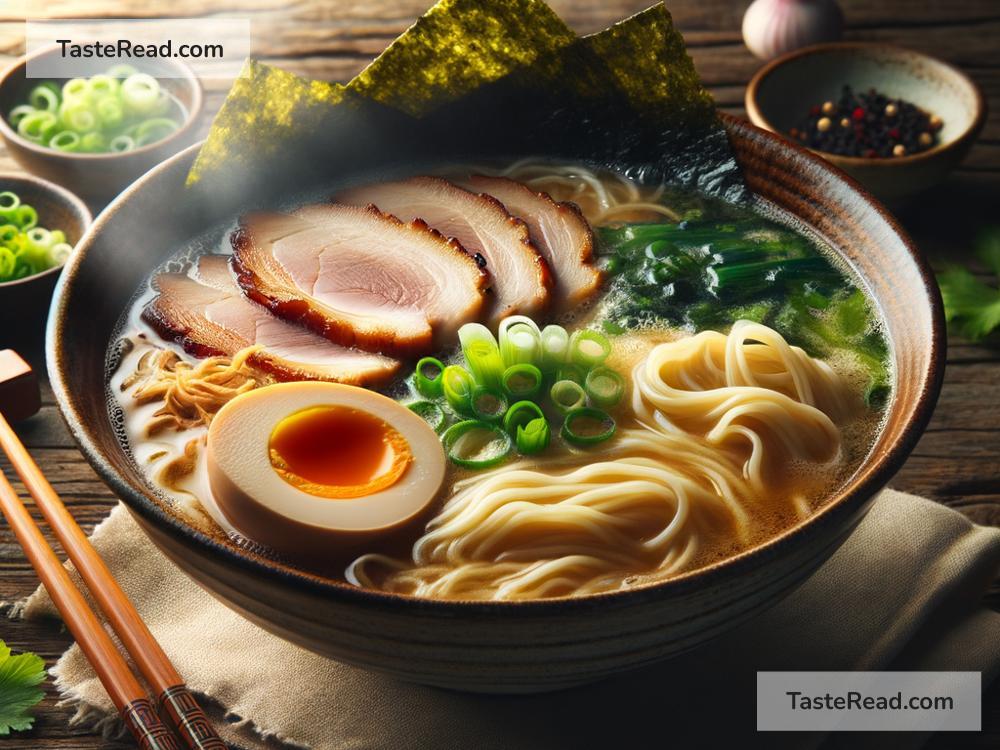The History of Japanese Ramen: A Simple and Fascinating Story
Ramen is one of Japan’s most popular dishes today, loved by people across the world. These hot bowls of noodles, served with flavorful broths and tasty toppings, are a perfect comfort food. But did you know that ramen wasn’t originally Japanese? Its story is full of surprises, and it connects cultures, history, and innovation. Let’s dive into the history of Japanese ramen!
Where Did Ramen Come From?
The origin of ramen goes back to neighboring China. In the late 19th century, after Japan ended its centuries-long policy of isolation and started interacting more with other countries, Chinese immigrants brought their food to Japan. Among the dishes they introduced were wheat noodles in a clear soup, which would later evolve into ramen.
In the late 1800s and early 1900s, Chinese noodle shops opened in cities like Yokohama. These bowls of noodles became known as “shina soba,” which means “Chinese-style noodles.” The noodles were softer than Japanese soba, and the broth often had a mild soy sauce or salt flavor. At the time, ramen wasn’t yet a cultural icon—it was a convenient and inexpensive meal for factory workers and students.
Ramen in Post-War Japan
Although ramen began as a Chinese-influenced dish, Japan put its own spin on it after World War II. The key moment in ramen’s evolution came in the 1940s and 1950s, a time of big changes for Japan.
After the war ended in 1945, Japan faced food shortages. The United States helped by sending shipments of wheat flour to make bread, but Japanese people used the flour to make noodles as well. This is when ramen truly began to spread across the country. Street vendors sold bowls of ramen because it was cheap, filling, and easy to make. These steaming bowls of noodles quickly became popular among everyday people looking for a warm meal during tough times.
Another important development in post-war Japan was the modernization of ramen shops. The 1950s saw the rise of dedicated ramen restaurants. Each region began to develop its own ramen styles, focusing on local flavors and ingredients. For example, Sapporo in northern Japan became known for its rich miso ramen, while Hakata in the south became famous for creamy, pork-based tonkotsu ramen.
A Global Instant Hit: Instant Ramen
It’s impossible to talk about ramen’s history without mentioning instant ramen. In 1958, ramen took a revolutionary turn when Momofuku Ando, the founder of Nissin Food Products, invented instant ramen. His creation allowed people to enjoy ramen at home without going to a noodle shop.
Ando’s invention was inspired by the hardship he witnessed during the post-war years. He wanted to create a food that was cheap, easy to cook, and could feed many people. His first instant ramen product, called “Chikin Ramen,” was a huge success in Japan, and soon after, it spread across the globe.
In the 1970s, Ando’s company went international with “Cup Noodles,” where instant ramen was sold in a portable container. People around the world could now enjoy ramen simply by adding hot water. This innovation firmly placed ramen in the spotlight as a global food phenomenon.
Ramen’s Cultural Evolution in Japan
Through the 1980s and 1990s, ramen transformed from being just cheap street food to a dish celebrated for its variety and complexity. Ramen chefs started experimenting with flavors. From soy sauce-based (“shoyu”) to salt-based (“shio”) broths, miso, and pork bone (“tonkotsu”) broths, each type of ramen has distinct characteristics. Toppings like soft-boiled eggs, pork slices (“chashu”), green onions, nori seaweed, and bamboo shoots added layers of flavor to the dish.
Ramen fans began debating over the best styles and shops, and ramen quickly became a part of modern Japanese pop culture. Entire magazines and shows were dedicated to finding the “perfect bowl.” It wasn’t long before ramen gained international recognition as one of Japan’s signature dishes.
Ramen Around the World
In the 21st century, ramen’s global popularity exploded. Japanese ramen shops expanded overseas, opening locations in cities like New York, Los Angeles, and Paris. Western countries embraced ramen as a trendy and exciting dish, often adapting recipes to suit local tastes. For instance, vegetarian and vegan ramen options became more common internationally, even though traditional ramen in Japan relies heavily on animal-based broths.
Ramen’s rise also coincided with foodie culture and social media. People started sharing pictures of their ramen bowls online, spreading awareness of this delicious dish. Today, whether it’s traditional Japanese ramen served in a shop or instant ramen made at home, it’s enjoyed by people from all walks of life.
Conclusion
Ramen’s journey began in China, evolved in Japan’s streets, and spread across the globe thanks to cultural exchange, innovation, and creativity. It went from being simple street food to a celebrated culinary icon. Each bowl of ramen contains a story—a story of history, flavors, and people.
So, the next time you enjoy your ramen, take a moment to appreciate the rich history behind this beloved dish. Whether it’s tonkotsu, miso, or instant ramen, you’re tasting a food that has traveled through time and melted borders, connecting cultures in the most delicious way possible.


